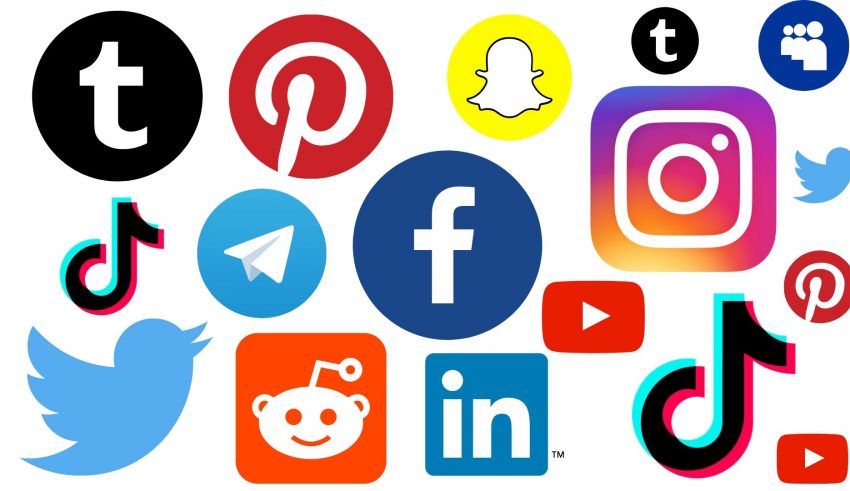The importance of creating compelling content for social media often goes overlooked—sometimes even by prominent brands. Content that has been strategically developed for social media from the ground up builds brand equity, creates psychological triggers for purchase behavior and humanizes companies across all spaces and industries. It is, without a doubt, one of the most crucial elements of success in today’s social landscape.
The key is to develop sophisticated ways to tell brand narratives that can help form lasting connections with consumers, and it all begins with crafting valuable and immersive content.

Why Content is King
As social media consumption continues to grow at a rapid pace, brands across all verticals are trying to accomplish the same goal: engage with consumers by meeting them in the socialsphere. With a significant portion of the world currently using Facebook and checking Twitter at least once daily, the vast majority of today’s best brand marketers agree upon these and similar platforms as being essential vehicles for building audiences.
Why is content so important? It’s one of the most effective tools available via modern marketing practices and gives brands the ability to engage with past, current and potential consumers. Content comes in many forms, from blogs to static imagery to dynamic video content—the opportunities are endless. Though significant in the past, today’s digital landscape has made content perhaps more valuable than ever, thanks in large part to the widespread use of social apps on smartphones.
Here are just a few reasons why content is king:
Content Can Solidify Thought Leadership — The best brands in today’s increasingly crowded marketplace are those who are trusted as being leaders in their particular space. The concept of “thought leadership” can be viewed in many different ways. In general, however, it’s about establishing trust in audiences both old and new that a brand is the ultimate source of knowledge on the types of products or services it offers. This can be achieved with blog posts, infographics, short videos and plenty of other content types—all essential for a successful social media strategy.
Content Provides Consumers Value — People take to the Internet for many different reasons, but one of the most common is simply to ask questions. Whether it’s something mundane like, “What’s the best way to fix a noisy washing machine?” or more specific and complex (“How do I write a business plan?”), the need for both quick information and an expansion of knowledge on a particular subject has turned social media into the modern focus group. By creating compelling social content, you can adequately develop consumer relationships and provide solutions to their passion and pain points.
Content Fosters Conversation — There’s no better way to engage with a brand’s audience than to start a conversation. Social media plays a crucial role in this all-important element of modern marketing, but again, posting without strategic thought as to what’s being presented isn’t a practical solution for brands. If anything, content—both in visual and written forms—can serve as a conversation starter, breaking the ice and getting users to interact with one another, all with your brand’s products or services as focal points.
When it comes to communicating valuable information across multiple channels, social media content services are the key to success.
Social Media Content Strategy: Building a Digital Footprint
As with any other marketing tactic, social media content marketing can only be as successful as it is well-planned. Strategy is everything, shaping the way content is conceptualized and shared to maximize levels of connection. It’s the navigational system that keeps social media marketing on course, made up of a series of steps that cannot go overlooked.
Step 1: Identify a Target Audience
At Social Control, our social media content strategy is based on the fact that social media was never actually intended for marketing purposes to begin with. We start the process of developing a strategy with the same first step for every brand we work with—identifying and understanding a target audience.
When many people hear the term “target audience,” current consumer demographic is primarily what comes to mind. This is useful information that can be used to great effect, but it’s also just a small glimpse of the larger picture. On top of understanding who is currently following your brand on social media, it’s also essential to determine the makeup of your desired audience, as well as how their being influenced elsewhere on social. The more thorough an overview of your current and prospective consumers, the more likely it is you’ll find success with social media content marketing.
Much of this information can be gleaned via market research, such as how users interact with other, similar brands. Market research can provide you with a good portion of what you need to know to determine how users behave across social media and what their shared values may be, which leads to the development of consumer archetypes.
Consumer Archetypes
Developing consumer archetypes is one of the most important aspects of identifying a target audience—it can also be a fun, creative process. Archetypes are essentially fictional characters that are based on real-world individuals who fit within a specific brand’s target audience. If for example, the brand in question is in the health and wellness space, one archetype may be “Creator,” whose characteristics may include non-conformity, imagination, and sense of aesthetics. The Creator’s challenges, however, may exist in the form of over-dramatization, or even perfectionism.
We now have clarity about one subset of the target audience, as well as a better idea of what types of content they may be likely to engage with. Dynamic storytelling typically involves 12 different archetypes, with successful brands honing-in on 3-5 that best speak to desired consumers.
Step 2: Developing Content Structure
Once consumer archetypes have been agreed upon, the next step we take is to develop a brand’s content structure. The aim in developing content structure is to identify which types of content will add actual value to and integrate with the lives of a prospective audience—content that will organically connect with their collective subconscious to evoke a pleasurable, emotional experience. We typically identify four categories of content that will be most effective in generating engagement for a brand; “promotional,” “connective tissue,” “inspirational” and “educational” are just four options that may be well-suited for certain brands.
Another important factor in developing content structure is to isolate specific themes that can serve as focal points for blogs, video and other forms of content. As an example, a brand in the fitness space may want to focus on content that falls within themes such as healthy living, bodybuilding, and weight loss. All, or at least most of these topics are likely to resonate with someone who is interested in engaging with a fitness brand, providing a solid base to work from as concepts are developed and tested.
Finally, a brand voice must be agreed upon to keep the content of all forms consistent across channels. The “tone of voice” of a brand encompasses the words, terms, attitudes, and expressions utilized in content, all with the purpose of building a connection between consumer and brand. As one might expect, the voice can differ dramatically from one brand to another, ranging from serious and authoritative in tone to casual and upbeat.
Step 3: Concepts & Content Creation
With archetypes, themes and content categories all identified in full, the next step is to brainstorm storylines and concepts. Not unlike writing a script for a short film, developing storylines involves understanding what your target audience might say or do in their everyday lives. Scenarios that speak to an audience’s passion/pain points and are able to elicit feelings of emotion can be highly effective tools for boosting engagement, allowing brands to make use of the archetypes they’ve developed earlier on in the process.
It takes just a single concept to serve as a quality jumping-off point for creating dynamic content. Be it in the form of a static visual or piece of video content, storylines and imagery must be married together to create compelling posts that speak directly to the values and desires of a brand’s target audience. Copy should be attention-grabbing and should also ask questions whenever possible, encouraging users to engage in a dialog.
One of the most important factors to consider when developing content for social media is which platforms will be utilized as part of a campaign or ongoing program. Take Instagram, for example, where artistic visual content such as well-shot photos and short video clips excel. The same simply cannot be said for Twitter, a platform where link-sharing and corporate news blasts reign supreme for most brands. All of the major social platforms offer opportunities for content marketing, but only when content is developed specifically for each platform and delivered in the most adaptive manner possible.
Tying it All Together: Testing and Measurement
Once a brand’s content has made it out into the world via social media, it must be tested to ensure that things are headed in the right direction. At first, it may appear all archetypes perform well, no matter what the message being delivered happens to be. What may present itself with time, however, are the differences in how certain audiences interact with each specific archetype. One archetype may garner shares, for example, while another may draw large numbers of comments. Community management, A/B testing and close scrutinizing of results are essential for discovering what works best and may take several months to perform.
Why test and measure social media content marketing? Aside from helping you keep the ship on course, so to speak, information obtained from the analysis will help you develop calls-to-action or CTAs that consumers will be most likely to engage with. These can be incorporated into your posts slowly, thus boosting engagement levels without ever making consumers feel as if they’re being advertised to.
#REG #theRippleEffectGroup #socialmediacontent




